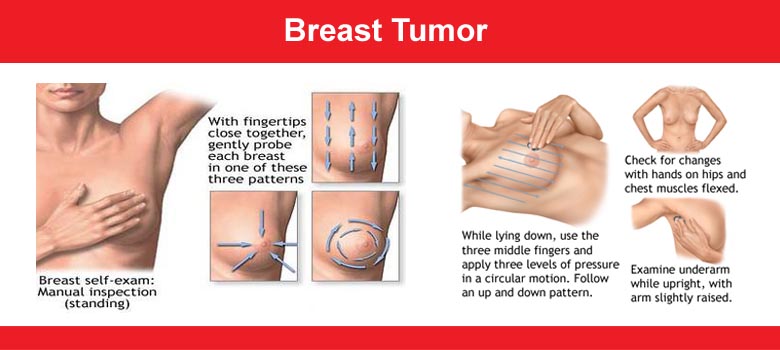
Breast changes are common. From the time a girl begins to develop breasts, begins menstruating and throughout life, women may experience various kinds of breast pain and other breast changes. Some of these changes normally occur during the menstrual cycle, during pregnancy, and with aging. Breast lumps, tenderness, and other changes may occur. Most breast lumps and other changes are not cancer.
Fibroadenomas are benign (not cancerous) growths and are very common. These growths most commonly occur in women 30 to 35 years old, but can also occur in women under 30 years of age.
They sometimes grow quickly in teenagers or during pregnancy.
Symptoms
- Fibroadenomas are smooth, round and easily movable swellings. It is referred as ‘Breast Mouse’ or ‘floating tumor’ as it easily sleeps away from fingers. Size of the tumor may vary from one to five centimeters.
- It could be single or multiple.
- Generally it is painless and may affect both breasts.
- Pain and tenderness (pain when touched) may be present especially before periods and subsides after periods. These cyclical changes are because of the hormonal changes. This is the reason why it is less common after menopause.
Fibrocystic changes are characterized by breasts that are lumpy with many irregularities in the breast that feel almost grainy. Fibrocystic breasts seem to occur because a woman's breasts are extra sensitive to fluctuating hormone levels. Women with fibrocystic changes may have pain and/or lumps.
Investigations
Following investigations are useful in diagnosing the breast cancer.
- Mammography of the breast
- Sonography of the breast
- Biopsy
- MRI scan of the breast
Self breast examination techniques for women
All women should know this technique and they should regularly do self examination at least once in a month after the cessation of menstrual cycle. The steps for self breast examination are as follows.
- Step 1 Stand in front of the mirror and just observe the breasts for size, color change, any retraction, visible lump or crusting of nipples.
- Step 2 Raise both arms up, notice that both the breasts rise evenly on the chest wall.
- Step 3 Now lie down on bed without using pillow. With the flat palm palpate the breast slowly but firmly in circular pattern. Start palpating from outer area and slowly move towards the nipples and areola.
- Step 4 If you feel any lumps, try to identify its feeling.
- Step 5 Examine the armpits. Look for any swelling or lymph node enlargement in the armpit.
- Step 6 See if any discharge is coming through the nipple.
- Step 7 Repeat the same steps for the other breast also.
One can easily note any abnormality in the breast at the earliest by doing regular self examination of the breast. The early diagnosis helps in preventing the spread of the cancer to the surrounding tissues and organs. Early diagnosis and treatment can considerably help in improving the prognosis of the disease.
Treatment
Homeopathy is strongly suggested in the treatment of Fibroadenoma. Homeopathy can be given as a baseline treatment in mild and moderate cases where as it has good supportive role in advanced cases of tissue changes. The results using homeopathy in the cases of Fibroadenoma are very good.
Homeopathic medicines are prescribed after studying patient’s complete case history. It enhances the body’s self healing mechanism (immunity) thus further recurrence of fibroadenoma can be prevented.
At Astha Clinic we have treated a good number of cases of Fibroadenoma using homeopathy .

